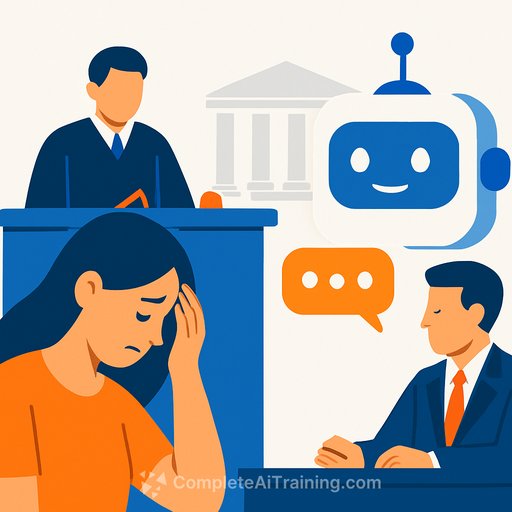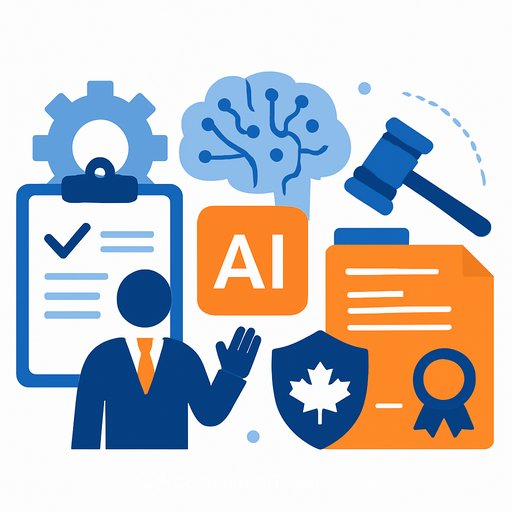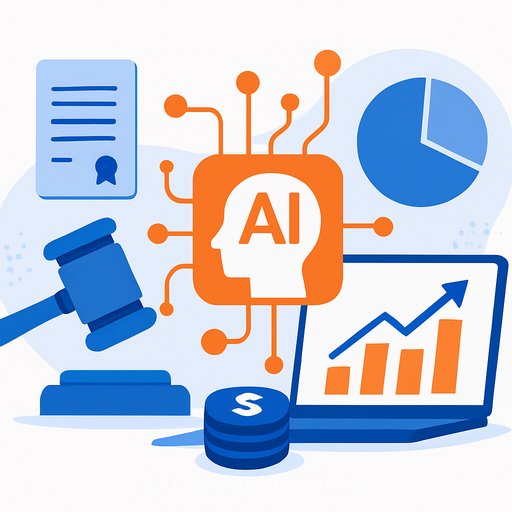AI chatbots, teen suicides, and the legal stakes
Families are alleging that conversations with consumer chatbots contributed to severe distress and, in some cases, suicide. Lawsuits are testing whether chatbot makers owed a duty to teens, whether warnings were adequate, and how product liability applies to generative systems.
For legal teams, the exposure spans tort claims, consumer protection, and privacy-plus unsettled questions around Section 230, arbitration, and class treatment. The facts will turn on logs, safeguards, and the company's choices before, during, and after high-risk interactions.
What plaintiffs are likely alleging
- Negligence and wrongful death: unreasonable design, insufficient safeguards, and failure to escalate to crisis resources.
- Product liability: design defect, failure to warn, and safer alternative designs (e.g., crisis-handling flows).
- Consumer protection (UDAP): misleading safety claims, omissions about known risks, or marketing to minors.
- Negligent misrepresentation: overstated guardrails or reliability that users reasonably relied on.
- Privacy and minors: mishandling of teen data or inadequate age gating; potential COPPA issues for users under 13.
- Emotional distress: harmful prompt responses that allegedly intensified self-harm ideation.
Core evidence and discovery targets
- Chat logs, timestamps, and model/version identifiers tied to the session.
- Safety policies, refusal templates, and escalation playbooks used at the time.
- Age-gating flows, parental controls, and crisis-response triggers (or lack thereof).
- Red-team reports, known-issue trackers, incident tickets, and postmortems.
- Training, fine-tuning, and safety-tuning datasets; evaluation results for self-harm prompts.
- Guardrail vendors, plug-ins, or third-party integrations involved in the conversation.
- Marketing claims and internal risk memos about teen usage.
Key defenses you should expect
- Causation: independent intervening factors; chat logs insufficient to show proximate cause.
- Section 230: immunity arguments for hosting and moderation; plaintiffs will argue provider-created outputs fall outside immunity.
- Product vs. service: classification disputes to narrow strict liability theories.
- Warnings and disclaimers: assertions that risks were disclosed and resources provided.
- Arbitration and class waivers: enforceability for minors and unconscionability challenges.
- Comparative fault: user conduct, third-party content, or off-platform influences.
Section 230 and generative outputs
Expect contested motions on whether a model's own generated text is "information provided by another information content provider." Some courts have shown skepticism that provider-created AI outputs qualify for immunity, especially where the design allegedly produces harmful guidance. Outcomes will be fact-specific and jurisdiction-dependent.
Primary text: 47 U.S.C. § 230 (LII).
Regulatory exposure beyond civil litigation
- FTC Act Section 5: unfair or deceptive safety claims; inadequate testing or oversight can trigger enforcement.
- State AGs: consumer protection and youth protections, including age-appropriate design obligations where applicable.
- Privacy: COPPA for sub-13 users; data minimization and retention around chat logs.
- Product safety: scrutiny of foreseeable misuse, warnings, and safeguards for high-risk use cases.
Risk controls counsel should push now
- High-risk intent detection: real-time detection of self-harm signals with immediate refusal, resource links, and optional warm handoff to human support.
- Age safeguards: age gates, teen-safe default modes, locked-down features for minors, and parental controls.
- Guardrail testing: dedicated self-harm evaluation suites, adversarial red-teaming, canary prompts, and regression gates before release.
- Human-in-the-loop: supervised escalation paths and 24/7 coverage for crisis triggers in consumer products.
- Safety documentation: model cards, safety notes, changelogs, and rationale for design choices preserved with versioning.
- Marketing and UX alignment: no safety overstatements, no dark patterns that keep distressed users engaged.
- Vendor governance: contractual safety requirements, audit rights, and incident notification SLAs.
- Insurance and reserves: review coverage for AI-related harms and update reserves based on exposure.
Litigation readiness checklist
- Legal holds covering chat logs, model artifacts, fine-tuning data, safety configs, and A/B results.
- Reproducibility plan: snapshot model versions, prompts, and safety settings to replicate outputs.
- ESI maps: who owns what systems (product, safety, data, trust & safety, vendors) and retention periods.
- Privilege hygiene: separate safety testing for counsel; label and limit distribution.
- Experts: human factors, suicidology, machine learning, content moderation, and warnings.
- Protective orders: confidential handling of teen data and sensitive logs.
What courts will probe
- Foreseeability of harm to teens and whether safer alternative designs were practical.
- Adequacy of warnings and crisis resources delivered during the interaction.
- Design tradeoffs: accuracy vs. safety; known failure modes and mitigations in place.
- Proximate cause: strength of the link between specific outputs and the outcome.
- Punitive exposure: prior incidents, internal awareness, and speed of remediation.
Action plan for in-house counsel
- Stand up an AI safety review board with authority over release gates and crisis flows.
- Run a red-team sprint focused on self-harm scenarios; close critical findings before the next release.
- Update ToS, product warnings, and teen policies; test the flows with real users and record evidence.
- Brief the board on litigation exposure, reserves, and regulatory risk; set quarterly reporting.
- Run a tabletop exercise: incident response for a high-risk conversation involving a minor.
If you or someone you know is considering self-harm, contact the 988 Suicide & Crisis Lifeline at 988lifeline.org or dial/text 988 in the U.S.
If your product and legal teams need structured upskilling on AI safety and governance, you can explore role-based training options here: Complete AI Training: Courses by job.
Your membership also unlocks:






